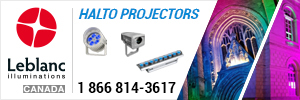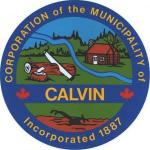 The message was simple, clear and direct. “Vote … It’s Important” read buttons, posters, transit ads and street signs that could be seen around the Metro Vancouver area last month.
The message was simple, clear and direct. “Vote … It’s Important” read buttons, posters, transit ads and street signs that could be seen around the Metro Vancouver area last month.
The campaign, aimed at increasing voter turnout from a regional average of 31 per cent in 2005, was a concerted campaign spearheaded by staff and councillors with the District of Maple Ridge.
Engaging voters with municipal elections has been a challenge everywhere, and British Columbia municipalities were faced with the added problem of voter fatigue and confusion caused by a federal election only a few weeks earlier.
With the hope of increasing public awareness of the election and improving on the 2005 voter turnout results, Maple Ridge invited neighbouring municipalities in the northeast area of Metro Vancouver to work together.
“We wanted to create a joint initiative that would use a common theme,” explains Gary Manson, Maple Ridge’s manager of corporate communications.
 As in many urban areas, residents commute through various municipalities on their way to jobs, school and shopping. Manson says the vision was to create common visuals and a shared message that would become familiar leading up to the election.
As in many urban areas, residents commute through various municipalities on their way to jobs, school and shopping. Manson says the vision was to create common visuals and a shared message that would become familiar leading up to the election.
Sharing the costs of creating materials and advertising also made the program less expensive for municipalities. Each municipality decided how to incorporate materials into their own voter awareness program.
In Maple Ridge, less than $10,000 supported a program that included manned booths in local shopping malls and a weekly municipal affairs column which ran for free in the local newspaper.
Manson is enthusiastic about the campaign, which he says resulted in some good dialogue with voters. However, he’s also somewhat disappointed with the results.
“We didn’t quite achieve what we wanted to achieve,” he admits, noting that the recent election saw a 29 per cent voter turnout in Maple Ridge – a drop of two per cent from 2005, although still close to the average of just under 30 per cent across Metro Vancouver.
While a few municipalities saw as much as a 10 per cent increase in voter turnout, Manson admits that mostly modest changes occurred throughout the area, with the majority of the communities seeing some decline.
“The question still remains – why didn’t voters turn out?” he asks.
 It’s possible, Manson says, that the turnout might have been even lower without the awareness campaign. As well, the federal election and American presidential election may have had an impact.
It’s possible, Manson says, that the turnout might have been even lower without the awareness campaign. As well, the federal election and American presidential election may have had an impact.
Or maybe, he speculates, people are simply largely satisfied with municipal government in British Columbia?
“I don’t think it’s an easy answer because this is an ongoing thing in jurisdictions across North America,” he says.
However, this year’s work has given him inspiration for future campaigns. In response to public comments about lack of information on candidates, he wonders about creating a common website or publication to disseminate materials.
He believes getting more businesses and local service groups involved with future campaigns would be helpful, and even speculates on offering incentives like food at polling stations. He also believes it is important to continue to work through the school system to raise awareness among young people.
Despite the lack of immediate improvement, Manson believes the partnership approach to the campaign was successful and hopes to continue it in future elections. “I’d love to even see a whole provincial campaign here,” he says.
Regardless of the challenges or the methods, he thinks it is work municipalities need to continue. “It’s a way for us to maintain a strong democratic and civil society,” he says.










